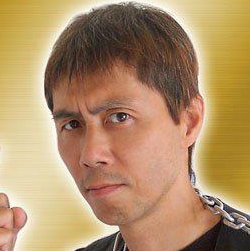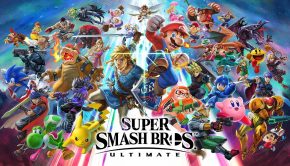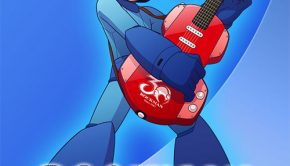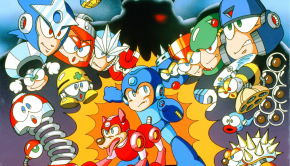Koji Hayama Profile
 |
Also Known As: 葉山宏治 (はやまこうじ) / Aniki / Aniki Koji Hayama / Big Brother / Kohji Hayama |
| Date of Birth: JAugust 4, 1965 (Yokohama) |
|
| Residence: Tokyo |
|
| Game Works: Cho Aniki, Super Robot Taisen, Front Mission 3 |
|
| Official Site: English Site |
History
| Organisation | Type | Tenure | Role |
| Brian Gray | Game Developer | 1988 – 1989 | Composer |
| Winds | Music Production | 1989 – 1991 | Co-Founder, Composer |
| CUBE | Music Production | 1991 | Composer |
| TWOFIVE | Music Production | 1996 – 1997 | Artist |
| Hayama Ongaku Seisaku | Music Studio | 1997 – | Founder, Producer, Composer |
| GE-ON-DAN | Artist Collective | 2009 – 2011 | Member |
Biography
Koji Hayama is a game musician famous for his original albums, live concerts, and work on the Cho Aniki series. Born on August 4, 1965 in Yokohama, Hayama’s favourite band while growing up was the folk group ALICE. Inspired by their precedent, he learned to play the folk guitar to a good standard and also picked up some drum sticks. At the age of 14, he played one of the band’s singles at his school’s annual cultural festival and embraced the limelight while playing in front of a large audience. Such experiences showed him how satisfying it can be to entertain through music and he started to build an enticing stage presence. During the subsequent three years, he joined three bands while a student at Yokosuka Gakuin High School, one of which — Goruji Tai Kids — became well-known in the city. After failing an entrance exam to university, he dedicated some time to teaching himnself how to compose, before being accepted as a student as a specialist medical school. Scouted by a friend in the game industry, he was able to fund his studies through part-time work at the Masaya Corporation. Through this company, he wrote music for the PC-8801 RPGs Elthlead, The Crest of Gaia, and Gaiflame, regarded as precursors to the Langrisser series, as well as a title he forgot. Despite his lack of prior experience or absence of theoretical knowledge, his upbeat tunes on behalf of these games were received and, for each of them, he received around $100.
In 1987, Hayama graduated from university and decided to, as opposed to becoming a doctor, enter the game industry full-time. He found his previous experiences rewarding both financially and in terms of enjoyment, but was hesistant about how successful he would be with little corporate or musical background. He was initially recruited by Brian Gray to score three quarters of the 1988 PC-8801 game Last Armageddon and, while the resultant soundtrack was well-received at the time, the composer views it as embarrassingly amateurish in retrospect. Leaving Brian Gray in 1989, he set up a company with several friends and started designing Lightning Vaccus: The Knight of Iron; out of their depth, they eventually handed the project over to Masaya to complete. Hayama bounced back by establishing the music production company Winds with seven friends and went on to score two prominent TurboGrafx-16 titles through them, Shockman (aka Shubibinman 2) and Ranma 1/2 — compiling the former into a soundtrack release. But the role was another short-lived when he was sacked and destructively criticised by his co-composer. Never losing his resolve, Hayama concluded his erratic period as an employee with the game music development company CUBE for six months in 1991. Here, he contributed the scores to the TurboGrafx-16’s Shubibinman 3, the Mega Drive’s Taiheiki, and the arranged album Blue Almanac, where he arranged Noriyuki Iwadare’s “Planet Auri”. He quit thereafter, desiring the freedom of a freelancer and coming to the realisation he preferred to work alone.
Hayama made his debut as a freelancer with the late 1992 games Moto Roader MC, Macross: Eternal Love Song, and Cho Aniki. Of these, Hayama’s humorous and extravagant music for Masaya’s Cho Aniki (translation: Super Big Brother) became a talking point after the quirky action game became a cult hit across Japan. At record label NEC Avenue’s request, Hayama arranged the game into his first original album, Cho Aniki -Aniki no Subete-, in February 1993. Boasting an accessible light rock style, the highly entertaining and endearing album featured frequent musical parodies, copious amounts of hilarious vocal use, and a diverse palette of supporting instruments. The album’s 1500 copies sold out on its release day and, after more copies were printed, outsold even the game itself with over 50,000 total copies having been bought. In response to his newly acquired fanbase, Hayama held his first live show Aniki at the InkStick Suzue Factory on April 27, 1993, attended by over 800 fans. Young, fresh, and excited, Hayama was able to reflect his entertainer’s spirit and develop an extravagant persona with an unconventional show intended to continually stimulate the listener more than most traditional concerts. The built on the popular success of Cho Aniki by releasing the vocal single Jingi naki Aniki (aka The Jinki without Aniki) — another best-seller that was No. 16 of the Oricon Pops Chart and made an appearance on a TV countdown show. At the height of his popularity, he was even invited to participate in the Game Music Festival of 1993 alongside many game music legends. Cho Aniki changed Hayama’s life forever and made him a legendary figure in the realm of, by his own description, “screwball entertainment”.
Hayama opened 1994 with the release of the first of his five non-game original albums, Cho Hayama -Aniki Bangaichi-. Hayama noted that he felt pressured by the record label NEC Avenue to produce it, despite feeling exhausted from the previous year, but nevertheless worked hard to produce a respectable and amusing album. The artist performed at several more live show subsequently and, in response to his continued popularity on stage, compiled a video release featuring his best performances from his first six live concerts. In demand on wider productions, he went on to compose the popular duet-focused mini-album Bara-iro no Jinsei (aka Rose-Colored Life), singing with Mariko Kouda on “Lucky Rapper Party” and Shinta Furuta on two others. The duet with Kouda proved especially popular, appearing on three Twinbee Paradise vocal albums and featuring at both the 1994 and 1995 Game Music Festivals. Resuming work as a game composer in 1995, Hayama produced the score for Ane-san and adapted it as his third original album. Wanting to reflect a more mature side, he subsequently composed the instrumental score for the Saturn racing game Cyber Speedway (aka Gran Chaser) — writing a dynamic mixture of jazz and rock, featuring prominent use of the saxophone and guitar. While its soundtrack release didn’t differ from the game music, Hayama treats it as an original album despite usually making the distinction of game scores as business, original albums as a personal challenge. The year concluded with the ’best of’ album Game Music is Dead — well-received by fans, but regarded by a bitter Hayama as a selfish production by record label NEC Avenue, despite his fondness for the cover art.
Despite being contracted at Two Five for much of 1996 and 1997, Hayama remained active as an independent artist. His second non-game original album Kinzoku Bat Ichi-go, was released under the record label Toshiba EMI; highly regarded by Hayama and fans alike, the release was commemorated with a live show, later released on video. At request, he also did a second duet with Mariko Kouda, “Futari wa Boukensha”, featured in two further Twinbee Paradise albums and once again highly regarded. On behalf of Tokyo FM, he DJed on the radio program Dengeki Paradise and wrote some magazine articles. Realizing the extent that the notion of “Koji Hayama = Cho Aniki”and “Cho Aniki = Homoerotic Screwball Entertainment” had become so deeply fused into the industry and his fanbase, Hayama dedicated much of his subsequent work to reflecting he was a versatile musician. After setting up the studio Hayama Ongaku Seisaku, he was contracted to produce game music for the Saturn’s Daisenryaku Strong Style and D-Xhird, as well as the opening theme of Battle Arena Toshinden URA, to varying degrees of exposure. He went on to compile his third non-game original album, Teikoku (aka Men’s Empire), featuring heavy sounds, crazy messages, some themes from these Saturn games, and, at a request from King Records, a remix of a ’70s Japanese song. In 1999, Hayama made his sole contribution to Square as the composer of half the score to Front Mission 3. Despite feeling intimidated by the high quality of co-composer Hayato Matsuo’s already completed music, he produced some effective ostinati-based orchestral action themes while handling most of the electronic and rock themes.
Also in 1999, Hayama returned to the Cho Aniki series after a four year break, with the Wonderswan’s Cho Aniki: Otoko no Tamafuda. His responsibilities were the vocal themes while his trainee Shigeki Hayashi handled the in-game music. Anticipating no further Cho Aniki projects after Masaya announced leaving the industry, Hayama commemorated the series’ music with the album release Cho Aniki Legend ’99 -Best & Super Remix-, as well as an album and live show dedicated to the latest game. He further appeased his fanbase with a series of high-profile guest contributions. He produced the slow ballad “boy-hood” for the vocal album Ten Plants 2 Children Songs, before performing his two duets with Mariko Kouda at her live concert. In 2000, he was invited to produce the theme songs for the crossover series Super Robot Taisen Alpha — singing the opening song “Enraged Spirit!!” in a controversial duet with Ichiro Mizuki and the ending theme “Oh Spirit, To the Sky” in a solo effort. The artist went on to release his fourth non-game solo album, Ashita wa Hareru (aka Tomorrow Will Be a Summer Day) in 2001; containing a number of songs that he had been working on for some time, the album was a more serious effort that contrasted with the Aniki sound. The subsequent year, he produced he final solo album, Genki o Deseyo!! (Cheer Up!!), whch exerted a more cheerful tone than its predecessor and is considered to be one of his best works. Unfortunately, Hayama found its production difficult and independent distribution through a website especially tiring. Following shows dedicated to this album and his tenth anniversary, he took an indefinite break as an original artist, convincing he was too old to have a widespread appeal.
While Hayama’s glory days were over, the composer received widespread recognition among Western audiences for the first time on 2002’s Ape Escape 2 (aka Saru! Get You! 2). The title’s background music was praised for being cute yet fitting, while the vocal songs endeared many listeners. Hayama was surprised and delighted to learn that Cho Aniki: Sei Naru Protein Densetsu (aka Cho Aniki: Legend of the Holy Protein) was being developed. Unsurprisingly, he returned to score the game, going on to produce a mini-album and a live show as tie-ins. The artist also made a guest contribution to 3rd Super Robot Taisen Alpha, mixing quirky theme songs in his characteristic style with entertaining instrumental tracks. Still not able to shake off the quirky projects, Hayama also handled the scores for Yoshinoya, dedicated to a beef bowl restaurant, and Honoo no Takuhaibin, featuring a megalomaniacal delivery man — the former blending whimsical instrumentals and frenetic beats, the latter filled with memorable power-rock anthems. He was also asked to produce several guest arrangements, primarily in the Aniki style, for Street Fighter Tribute Album and Mega Man ZX; despite the prominence of these franchises, he felt no personal connection for these projects and regarded them simply as business. Between such roles, he also worked on the manga tie-in Get Backers Dakkanoku: Ubawareta Mugenshiro, the low-key production Gaia Grapple, and the cancelled Jinrui Sousakan Pony: Alien vs. Alien.
In 2006, Hayama also established a relationship with the digital record label EGG Music. Many of Hayama’s soundtracks were made available through this service — spanning Gaiflame through to Honoo no Takuhaibin — and he also worked with the label to produce several special albums, including outtake collections, live recordings, and the special compilation Mirai wa Hikaru (aka To Your Shining Future). Hayama continued his return to prominence with a succession of guest roles: theme songs for Super Robot Taisen Z, five original compositions for Mega Man ZX Advent, and bouncy arrangements of Mario and Kirby favourites on Super Smash Bros. Brawl. Bringing his career round full-circle, Hayama also received the opportunity to score Cho Aniki for possibly a final time with the PSP’s Zero Cho Aniki; since this title was a remake of the original game, the score blended nostalgic arrangements of fan favourites with new compositions. Hayama has also started to compose for bishoujo games with Figurehead and Hitsujikun nara Kiss Shite Ageru; aiming for a nostalgic feel on such titles, he blended tender acoustic pieces, upbeat rock tracks, and poignant vocal ballads, and rendered them using old synthesizers. In a further role, he contributed the opening and ending themes for the Internet-based novel adaptation of Dragon Soul.
Hayama has been relatively quiet in the industry in the last few years. In his blog, he has sometimes mentioned that he feels dissatisfied with the direction the games industry has developed and no longer feels there is a place for his music among mainstream games. Indeed, his old-fashioned approach to composing and implementing music has no doubt contributed to his isolation, but Hayama would prefer to stay true to himself than adapt. The majority of his recent scores have been for fringe productions, for example the youthful action title Bon Bita and the bishoujo game Pygmalion. Nevertheless, he has contributed to several collaborative scores in recent years, writing impacting theme songs for 2nd Super Robot Taisen Z and 2nd Super Robot Taisen OG, action tracks for Half-Minute Hero, and special arrangements for No Fate! Hayama has also developed a relationship with shooter developer Cave, writing remixes for the arranged albums for Ketsui and Mushihimesama, as well as the arranged score for the console version of PinkSweets. Hayama has also recently released a best compilation through his personal website and continues to make occasional live appearances. In the West, Hayama remains controversial, still underexposed musically yet having antagonised audiences with comments about game composers and his superiority. Nevertheless, he remains respected and popular in Japan, primarily for his ’screwball entertainment’ but also for some of his more serious efforts. As long as he continues to write themes charged with intensity and emotion, there will always be something for Koji Hayama.
References:
– Various Game & Album Credits
– VGMdb Discography
– Official Site (English)
– Official Site (Japanese, Archived)
– Interview with Go Game Music (English, May 2004, Archived)
© Biography by Chris Greening (September 2007). Last updated on December 30, 2012. Do not republish without formal permission.
Posted on December 30, 2012 by Chris Greening. Last modified on March 21, 2014.














